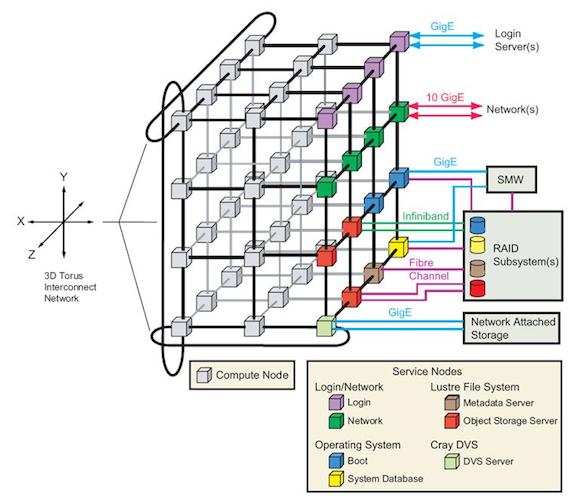While the sequencing the time and cost of sequencing entire human genomes has dropped dramatically, it still can take months to analyze the results. Over at CNET, Elizabeth Armstrong Moore from Portland writes that the Beagle Supercomputer at the University of Chicago can analyze 240 whole genomes in two days.
Beagle Cray XE6 Specifications
Nodes: 726
Processors: 1,452
Total compute cores: 17,424
Peak performance (Teraflops): 151
Total memory (Terabytes): 23.3
Beagle can process many genomes simultaneously rather than one at a time,” said Megan Puckelwartz, a postdoctoral fellow at the University of Chicago. “It converts whole genome sequencing, which has primarily been used as a research tool, into something that is immediately valuable for patient care.”
According to study author Elizabeth McNally from the Cardiovascular Genetics clinic at the University of Chicago Medicine, if the cost of analysis can be moved into the $1,000 range, it will make sense to analyze entire genomes instead of just a small fraction of them.
In the early days we would test one to three genes. In 2007, we did our first five-gene panel. Now we order 50 to 70 genes at a time, which usually gets us an answer. At that point, it can be more useful and less expensive to sequence the whole genome.” Plus, she adds, it often makes sense to do several sequences for certain families: “We start genetic testing with the patient, but when we find a significant mutation we have to think about testing the whole family to identify individuals at risk.”
Read the Full Story.





